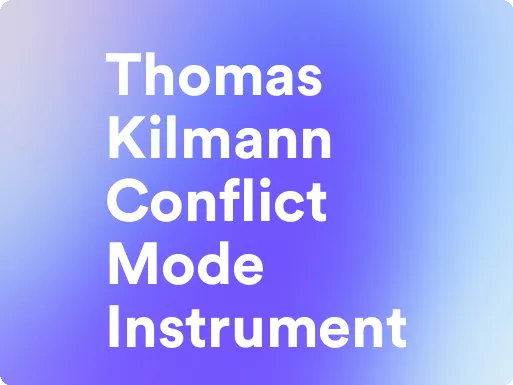Understanding the Thomas-Kilmann Conflict Mode Instrument
This guide will walk you through the essential elements of using thomas kilmann conflict mode instrument - the productivity method to keep your team productive and engaged.
Try Lark for Free
Conflict resolution is integral to maintaining harmonious relationships and productivity within organizations. The Thomas-Kilmann Conflict Mode Instrument is a valuable tool designed to help individuals better understand their approach to conflict and enhance their conflict resolution skills. By providing insights into different conflict-handling styles, the instrument enables users to navigate and address conflicts effectively, contributing to a more positive and collaborative work environment.
Overview of Conflict Resolution
Conflict is an inevitable aspect of any human interaction, and understanding how to manage and resolve it is crucial in various settings, including professional environments. Effective conflict resolution involves addressing differences of opinion or goals, leading to a resolution that ensures the continued productivity, stability, and positive relationships within an organization.
Conflicts in the workplace can arise due to various factors, including differing priorities, resource limitations, communication barriers, or interpersonal issues. Recognizing the existence of these conflicts and implementing strategies to address them is essential for fostering a healthy and productive work environment.
Introduction to the Thomas-Kilmann Conflict Mode Instrument
Named after its developers, Kenneth W. Thomas and Ralph H. Kilmann, the Thomas-Kilmann Conflict Mode Instrument is a widely-used assessment tool that helps individuals understand their typical responses to conflict-inducing situations. The instrument identifies five primary conflict-handling modes, providing insight into an individual's approach to resolving conflicts.
Understanding the Five Conflict Modes
- Competing: This mode reflects a high focus on achieving personal goals at the expense of the other party's concerns.
- Collaborating: In this mode, individuals aim to find a solution that satisfies the concerns of all parties involved.
- Compromising: A mode focused on finding an expedient, mutually acceptable solution through moderate assertiveness and cooperation.
- Avoiding: This mode involves evading or delaying a conflict, effectively sidestepping or postponing the issue to minimize confrontation.
- Accommodating: Individuals adopting this mode prioritize the relationship with the other party, even at the expense of their own needs or concerns.
Origin and Development of the Thomas-Kilmann Conflict Mode Instrument
The development of the Thomas-Kilmann Conflict Mode Instrument was influenced by prevailing psychological theories and the need for comprehensive conflict resolution frameworks. This section delves into the historical background of the instrument and its subsequent evolution, shedding light on its significance and applicability in contemporary settings.
Use Lark to unleash your team productivity.
Background of Thomas-Kilmann Conflict Mode Instrument
The theoretical foundations of the instrument draw from various branches of psychology and organizational behavior, intertwining elements of behavioral, cognitive, and social psychology. The pioneering work of scholars such as Kurt Lewin and Morton Deutsch, who focused on understanding human behavior within the context of social and organizational settings, significantly contributed to the theoretical underpinnings of the instrument.
Evolution of the Instrument
The development of the Thomas-Kilmann Conflict Mode Instrument involved an extensive process of research, validation, and refinement, culminating in its widespread adoption across diverse industries and organizational structures. The iterative nature of its development allowed for continuous enhancements, ensuring its relevance and adaptability in addressing the evolving dynamics of conflicts within professional environments.
